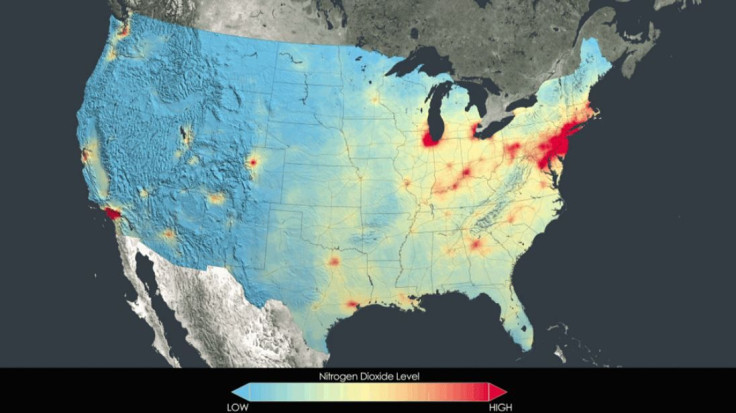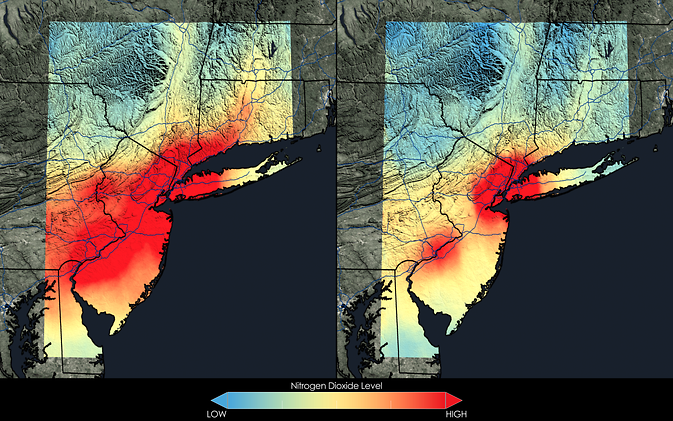New NASA Images Reveal Reduction In Air Pollution Across The US

NASA’s Aura satellite, which has been orbiting the Earth for nearly a decade studying the planet’s ozone layer, air quality and climate, has provided a set of new images that demonstrate a significant reduction of air pollution across the U.S.
Images from the Ozone Monitoring Instrument, or OMI, installed on Aura, showed that people living in major U.S. cities are breathing less nitrogen dioxide, a yellow-brown-colored toxic gas with a biting odor that can cause respiratory problems. The decrease in air pollution, despite increases in population and the number of vehicles over the years, has been attributed by NASA's scientists to new regulations, better technology and economic change.
“While our air quality has certainly improved over the last few decades, there is still work to do – ozone and particulate matter are still problems,” Bryan Duncan, an atmospheric scientist at NASA, said in a statement.
According to the U.S. Environmental Protection Agency, nearly 142 million people in the country still live in areas with high levels of air pollution, which is also a growing concern in other parts of the world, especially in developing countries.
The new images from Aura, which compared nitrogen dioxide concentrations during the spring and summer months from 2005 through 2007 with the same period between 2009 and 2011, provide a detailed look at the Ohio River Valley, the Northeast corridor and some populous U.S. cities, including New York, Atlanta, Denver and Los Angeles.
“Nitrogen dioxide is one of the six common pollutants regulated by the U.S. Environmental Protection Agency (EPA) to protect human health,” NASA said, in the statement. “Alone it can impact the respiratory system, but it also contributes to the formation of other pollutants including ground-level ozone and particulates, which also carry adverse health effects.”
Here are three images that show a decrease in air pollution in three major U.S. cities over a period of six years between 2005 and 2011. For more information about other cities, click here.
New York

Atlanta

Denver

© Copyright IBTimes 2024. All rights reserved.






















